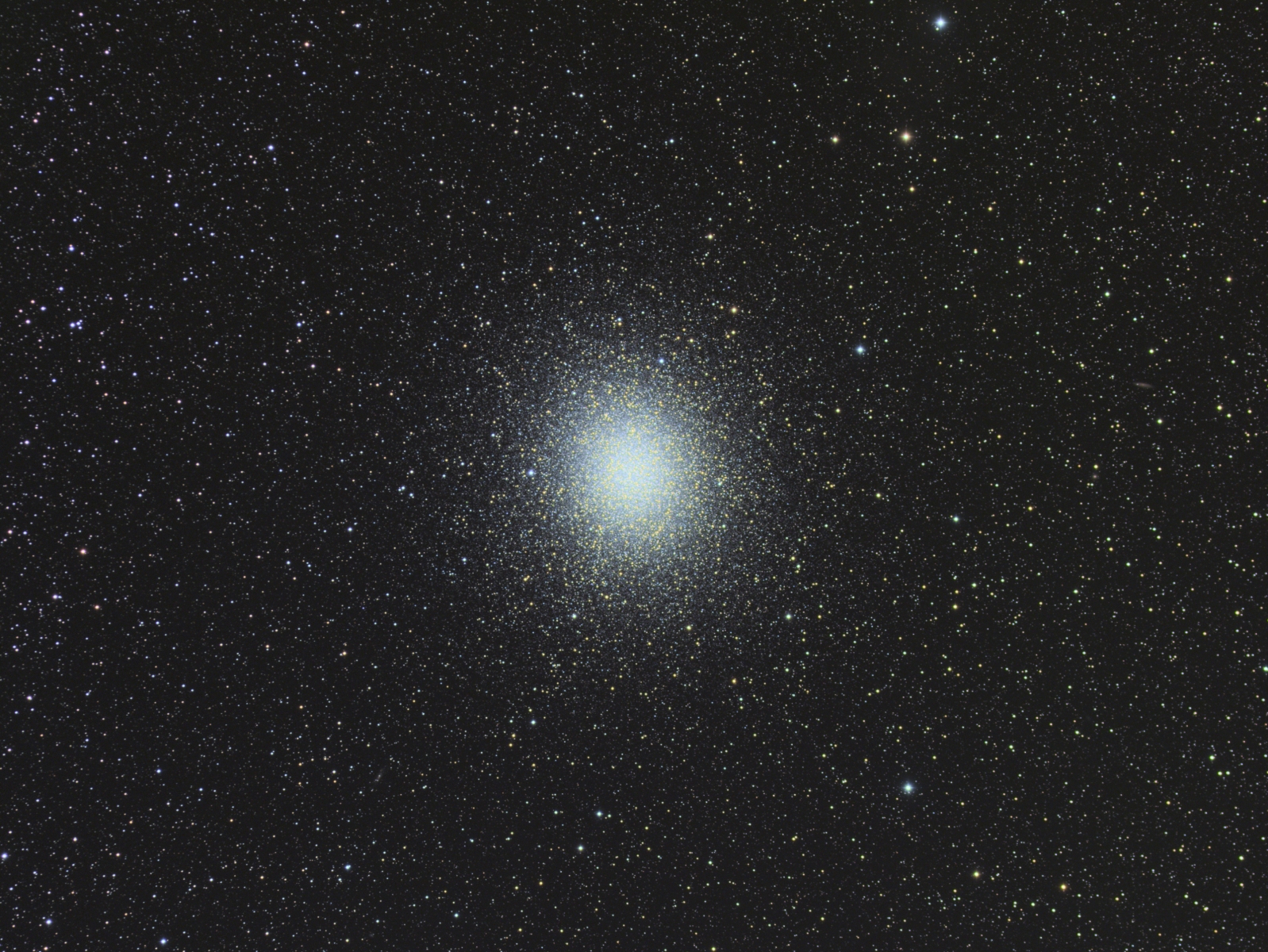Omega Centauri, NGC 5139 – In Centaurus
Omega Centauri (ω Cen or NGC 5139) is the largest globular cluster orbiting the Milky Way. It can be found in the constellation of Centaurus and is located at a distance of 17,000 light-years from Earth, making it one of the nearest globular clusters to the Solar System. Omega Centauri is the brightest globular cluster in the sky. Of all the globular clusters in the Local Group, only Mayall II (G1) in the Andromeda Galaxy is more massive and luminous.
Its visual size of 36 arc-minutes in the sky corresponds to a diameter of 175 light-years. However, when photographed it becomes apparent that its size is closer to 65 arc-minutes – implying an actual diameter of 300 light-years. It is estimated to contain several million stars and a total mass equivalent to 5 million solar masses, making it the most massive globular cluster of the Milky Way. Interestingly, it is about 10 times more massive than a typical large globular and about as massive as the smallest of whole galaxies.
| Optics | Takahashi FSQ106 at f/5 |
| Mount | Losmandy G11 with Ovision Worm |
| CCD | KAF-8300M |
| Filters | Astrodon LRGB E-Series Gen. 2 |
| Exposure | LRGB = 60-60-60-60 minutes Total: 4 hours |
| Location | 2016 Winter Star Party Florida Keys |
| Date | February 2016 |
| Software | TheSkyX, Pixinsight, Photoshop CC |
Omega Centauri is so distinctive from the other galactic globular clusters that it is thought to have an different origin. It is about 12 billion years old but it has been suggested that Omega Centauri formed over a period of 2 billion years instead of all at once. This has led to some speculation that Omega Centauri could rather be the remnants of a dwarf galaxy that merged with the Milky Way long ago.
A total of 4 hours was captured using a Takahashi FSQ106 at f/5 to create this image. It was taken at the 2016 Winter Star Party under pristine conditions.
